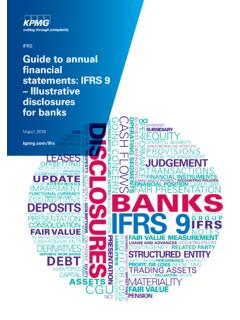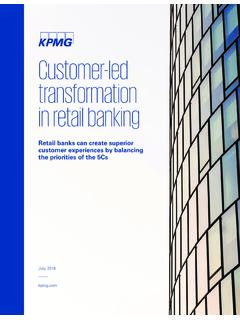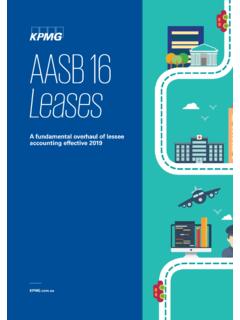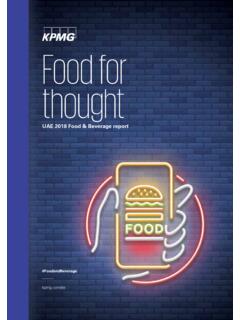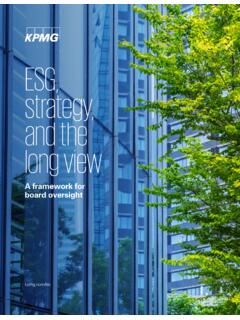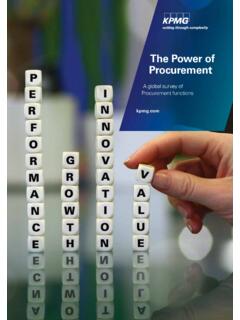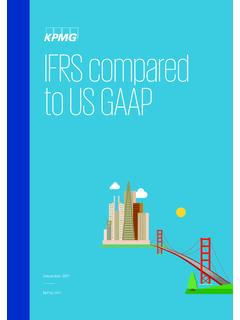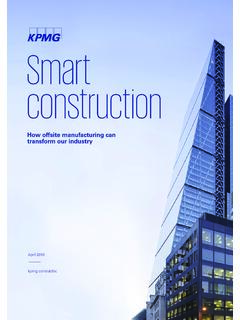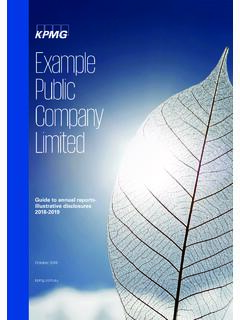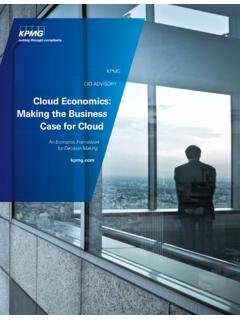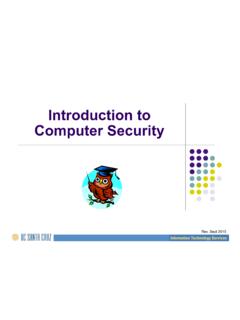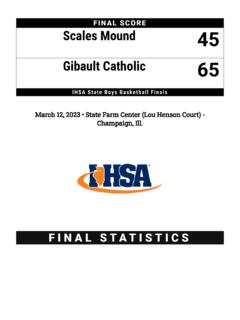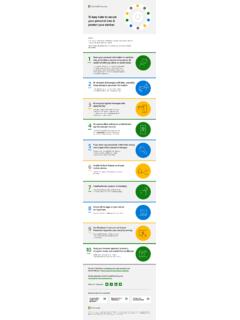Transcription of Global Banking Fraud Survey - assets.kpmg
1 2019 KPMG International Cooperative ( KPMG International ), a Swiss entity. Member firms of the KPMG network of independent firms are affiliated with KPMG International. KPMG International provides no client services. No member firm has any authority to obligate or bind KPMG International or any other member firm vis- -vis third parties, nor does KPMG International have any such authority to obligate or bind any member firm. All rights Banking Fraud multi-faceted threat of Fraud : Are banks up to the challenge?May 2019 2019 KPMG International Cooperative ( KPMG International ), a Swiss entity. Member firms of the KPMG network of independent firms are affiliated with KPMG International. KPMG International provides no client services. No member firm has any authority to obligate or bind KPMG International or any other member firm vis- -vis third parties, nor does KPMG International have any such authority to obligate or bind any member firm.
2 All rights findings05 Themes of the survey06 The Fraud operating model15 Conclusion19 2019 KPMG International Cooperative ( KPMG International ), a Swiss entity. Member firms of the KPMG network of independent firms are affiliated with KPMG International. KPMG International provides no client services. No member firm has any authority to obligate or bind KPMG International or any other member firm vis- -vis third parties, nor does KPMG International have any such authority to obligate or bind any member firm. All rights is delighted to share the findings of our inaugural Global Banking Fraud Survey ( Survey ). The Survey was conducted to obtain a Global perspective of how banks are tackling internal and external Fraud Survey questioned Banking Fraud risk, investigations and group security professionals on trends in Fraud typologies, challenges banks are facing in mitigating internal and external threats in the period 2016 to 2018, security in a digital age and how banks are structuring their teams and deploying resources to optimize their Fraud risk management s Global Banking Survey was conducted between November 2018 and February 2019 across 43 retail banks, 13 of which are in the Asia-Pacific, 5 in the Americas and 25 in Europe, the Middle East and Africa (EMA) region.
3 Eighteen have annual revenues in excess of US$10 billion and 31 employ more than 10,000 people across the would like to thank the respondents who took the time to participate in the Survey . We are delighted to share the results, accompanied by our own Global and regional insights from KPMG member firm : Global Banking Fraud Survey , KPMG International 2019 David Hicks Global Forensic Leader KPMG International Our Survey has identified that Fraud costs are increasing at a faster rate than Fraud risk management spend. A radical rethink is urgently required. Throughout this document, we , KPMG , us and our refer to the network of independent member firms operating under the KPMG name and affiliated with KPMG International or to one or more of these firms or to KPMG International. KPMG International provides no client services. No member firm has any authority to obligate or bind KPMG International or any other member firm vis- -vis third parties, nor does KPMG International have any such authority to obligate or bind any member firm.
4 2019 KPMG International Cooperative ( KPMG International ). KPMG International provides no client services and is a Swiss entity with which the independent member firms of the KPMG network are 25 Europe, The Middle East, Africa13 Asia-PacificKey findings Over half of Survey respondents globally experienced increases in both external Fraud total value and volume. Increasing Fraud typologies globally from 2015 to 2018 include identity theft & account takeover, cyber attack, card not present Fraud and authorized push payments scams. In this report we refer to such customer authorized payments as scams. The largest portion of respondents globally said that the total cost, average cost and volume of internal employee Fraud detected stayed the same or decreased. This may not, however, present a true picture of the cost of internal Fraud . Many external frauds originate with someone working inside the bank.
5 Over half of respondents recover less than 25 percent of Fraud losses; demonstrating that Fraud prevention is key. Banks are investing in new technologies, including machine learning real time Fraud alerts, voice, facial & fingerprint recognition (biometrics) and profiling how customers interact with their device and internet Banking (behavioral biometrics) towards Fraud prevention. In every region, banks surveyed considered the most significant challenge in Fraud risk to be cyber attacks. Fraudsters are obtaining customer data through hacking, in social engineering attempts, on the dark web and through criminal networks following data breaches, outside of banks controls. Ultimately, however, customers consider it banks responsibility to prevent social engineering Fraud on their account. Examples of such social engineering methods are set out in Appendix 1.
6 The Survey found banks globally are seeing an increasing trend in scams. Examples of scam types are set out in Appendix 2. Fraudsters are manipulating and coercing customers into making payments to them, bypassing bank controls. The UK has introduced a Contingent Reimbursement Model Code for Authorised Push Payment Scams to reimburse customers in certain circumstances; and for regulators and government to deliver a sustainable solution for scam victims. Customers are key in the prevention and detection of fraudulent activity on their accounts, particularly to reduce scam losses. More should be done to educate customers about Fraud and scams. Open Banking is considered a significant challenge in Fraud risk by banks, with banks across the globe getting ready to open their doors to third parties to access their customer data. Questions are being raised on the reliance that can be placed on third party controls.
7 Open Banking also presents an opportunity to gain a richer customer dataset, which can be used to prevent and detect fraudulent activity and recover Fraud losses. In the context of a changing Global Banking landscape, where the demand for face to face Banking is decreasing, volumes of digital payments are increasing and payments are being processed in seconds, fraudsters are creatively finding new ways to steal from banks and their customers. Banks need to be agile to respond to new threats and embrace new approaches and technologies to predict and prevent Fraud . Natalie Faulkner, Global Fraud Lead, KPMG International < 25%Over half of respondents recover less than an quarter of Fraud losses.> 50%Over half of respondents globally experienced an increase in Fraud value> 60%Over 60 percent of respondents globally experienced an increase in Fraud volumeCard not present( CNP )
8 Lack of a documented Fraud Operating Model and enterprise wide Fraud Risk AssessmentSocial engineeringFailures to detect impact management information and investment decisionsScamsOptimizing technology versus headcountCyber/ online fraudFinancial crime operations in silosTypologies Increasing products delivered via digital channelsRules, machine learning, artificial intelligence & roboticsSecurity in a Digital WorldComplex operating modelsNon-agile processesCustomer Education Here and now as opposed to predicting emerging trendsInvestment versus Costs Fraud Operating ModelHigh volume of false positives 2019 KPMG International Cooperative ( KPMG International ), a Swiss entity. Member firms of the KPMG network of independent firms are affiliated with KPMG International. KPMG International provides no client services. No member firm has any authority to obligate or bind KPMG International or any other member firm vis- -vis third parties, nor does KPMG International have any such authority to obligate or bind any member firm.
9 All rights IncreasedIncreasedStayed the sameIncreasedStayed the sameStayed the sameStayed the sameThemes of the surveyVolume increasingValue increasingAverage value increasing61%31%59%27%41%24%External Fraud The Survey found that in 2018, 61 percent of respondents indicated that the total volume of external Fraud had increased and 59 percent said the value had most cases, respondents felt the average value of each Fraud had stayed the same (21%) or decreased (38%). This is likely due to high volume, low value card Fraud . Increasing external Fraud typologies globally from 2015 to 2018 include identity theft & account takeover/impersonation Fraud , cyber attack, card not present Fraud and (employee) Fraud In contrast, the largest proportion of respondents said that globally the total cost, average cost and volume of internal Fraud stayed the same or decreased in 2017 and 2018.
10 This however, may not present a complete picture of the internal threat to a financial institution, as in our experience many external Fraud incidents originate with experienced criminal operatives working with internal sources who have a detailed working knowledge of bank systems, processes and controls (and any control gaps or potential harm of insider Fraud can be as great, if not greater, than external Fraud , given the ability of employees to exploit weaknesses in controls to target the most valuable assets of a bank. Banks should continue to take a proactive approach to detecting insider trends Source: Global Banking Fraud Survey , KPMG International 2019 External FraudInternal FraudThese statistics are based on Fraud detected. In our experience, Fraud detection is becoming more sophisticated however there will be an element of Fraud that has slipped through the gaps, yet to be not presentCyber/online fraudIdentity theft/impersonation fraudInternal fraudData theftMortgage application fraudMerchant fraudFinancial statement fraudRogue tradingFraud TypologyIncreasedIncreasedIncreased IncreasedIncreasedIncreasedStayed the sameStayed the sameStayed the sameStayed the sameAmericasEMAI ncreasedIncreasedIncreased IncreasedStayed the sameIncreasedIncreasedStayed the sameStayed the sameStayed the sameAsia-Pacific Over half of Survey respondents stated Fraud recoveries were less than 25 percent of Fraud losses.)
